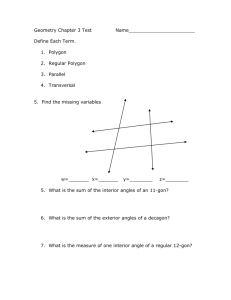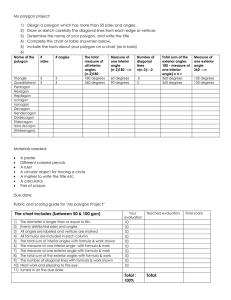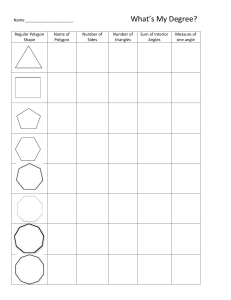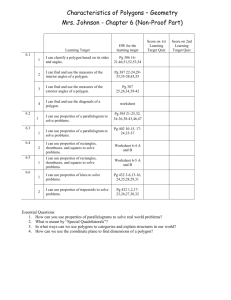Section 3.5 - Polygons
advertisement
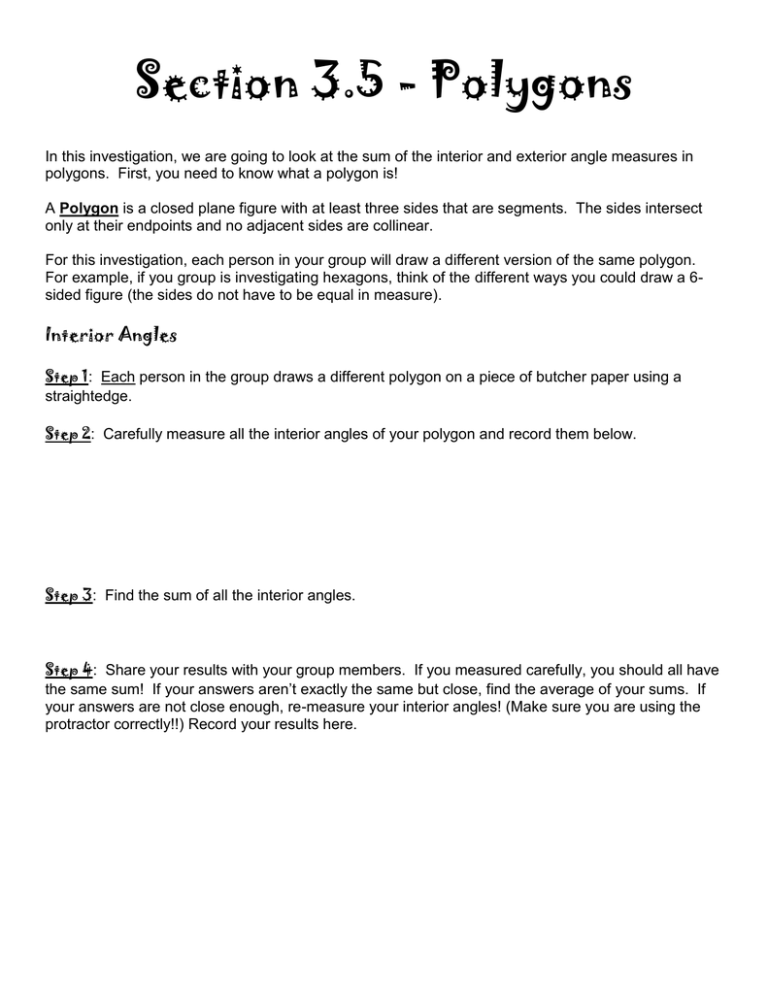
Section 3.5 - Polygons In this investigation, we are going to look at the sum of the interior and exterior angle measures in polygons. First, you need to know what a polygon is! A Polygon is a closed plane figure with at least three sides that are segments. The sides intersect only at their endpoints and no adjacent sides are collinear. For this investigation, each person in your group will draw a different version of the same polygon. For example, if you group is investigating hexagons, think of the different ways you could draw a 6sided figure (the sides do not have to be equal in measure). Interior Angles Step 1: Each person in the group draws a different polygon on a piece of butcher paper using a straightedge. Step 2: Carefully measure all the interior angles of your polygon and record them below. Step 3: Find the sum of all the interior angles. Step 4: Share your results with your group members. If you measured carefully, you should all have the same sum! If your answers aren’t exactly the same but close, find the average of your sums. If your answers are not close enough, re-measure your interior angles! (Make sure you are using the protractor correctly!!) Record your results here. Step 5: Pick ONE vertex of your polygon. Draw a diagonal from that vertex to each of the other vertices of the polygon. How many triangles are created? Step 6: Repeat Steps 1-4 with 2 different polygons other than a triangle. Record your measurements from Step 4 for each polygon in the table. Use your calculations from the three polygons to find a pattern and complete the rest of the table. (Hint: you should be able to fill out a 3sided polygon on your own first!) # of sides Sum of angles # of triangles 3 4 5 6 7 8 9 n A polygon with n number of sides is called an n-gon. Step 7: Look for a pattern in the completed table. Write a general formula for the sum of the interior angle measures of a polygon in terms of the number of sides, n. Exterior Angles You will be using the same polygons that you drew for above section. Step 1: Extend the sides for each polygon to form a set of exterior angles. Step 2: Knowing that the interior and exterior angles form a straight angle, what should be the measure of each exterior angle for your polygon? Use your protractor to check. (Hint: look back at your information from Step 2 of the previous section) Step 3: Calculate the sum of the measures of the exterior angles for your polygon. Write your sum below. Step 4: Share your results with your group members. If you measured carefully, you should all have the same sum! If your answers aren’t exactly the same but close, find the average of your sums. If your answers are not close enough, re-measure your exterior angles! Record your results here. Step 5: Repeat steps 1-3 for each of your 3 polygons from the first part of this investigation. Complete the following table. # of sides Sum of Exterior Angles 3 4 5 6 7 8 Step 6: Look for a pattern in the completed table. What do you notice? 9 n
